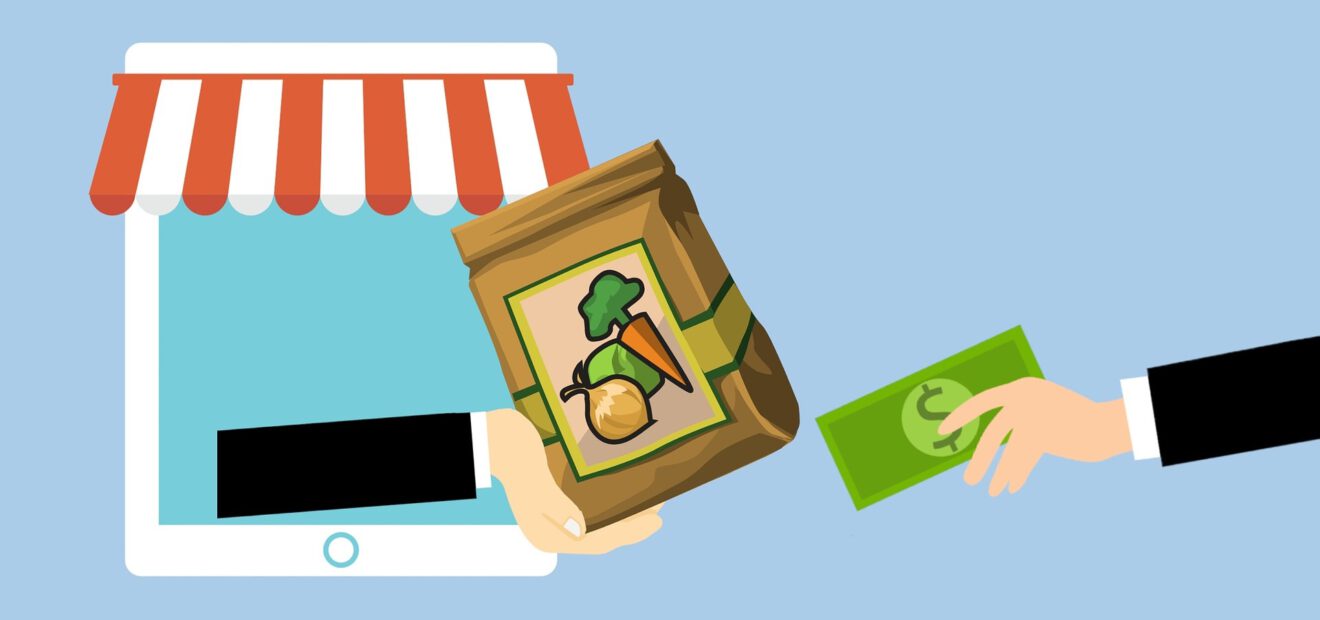The internet has allowed consumers to drive the ultimate motivating force in retail: convenience. E-commerce purchases let customers shop for nearly unlimited items from anywhere, not just brick-and-mortar stores, and those items can arrive at their doorsteps within hours. That convenience has extended to buying groceries; several retailers such as Walmart and Giant’s Peapod have launched their own internal online grocery services while online services such as Instacart and Shipt have delivery options from several different grocery retailers. All of these options have led to online grocery shopping being more accessible to consumers than ever, and more customers are turning to the services for the level of convenience they now expect when shopping.
A study by Edison Trends found Instacart has 59% of the market share for grocery delivery, making the service larger than Amazon and Shipt in the US. The report also noted Instacart’s top 2019 retail performers, including Publix, Kroger, H-E-B, Costco and Whole Foods Market — which ended its partnership with Instacart in May following Amazon’s acquisition of the retailer in 2017. Top-seller Publix does not have its own delivery service, making it a perfect match for Instacart users seeking to buy its products, as well as the convenience of online shopping.
Who is grocery shopping online?
A report by media and marketing firm Valassis — titled “Unpacking the Dynamic Online Shopper: Grocery & Retail” — found that nearly a third of US consumers have made an online grocery purchase in the past year from being surveyed. Those numbers change based on community type: 48%, 25% and 19% of consumers in urban, suburban and rural areas, respectively. These figures signify how using online grocery services is somewhat dependent upon where customers live, i.e. whether those people have ideal access to these services. Consumers in urban areas are less likely to have vehicles to transport grocery purchases, but those same communities are more likely to have several options for grocery ordering and/or delivery services.
According to the Food Marketing Institute’s US Grocery Shopper Trends report, Generation X saw the most growth in online shoppers in 2019, while baby boomers’ and millennials’ online grocery shopping also grew slightly. The growth in each age category demonstrates that these grocery services are being used by people of any age, not just consumers who have had online shopping as an option for most of their lives.
Why make an online grocery purchase?
According to the Valassis report, 72% of the overall consumers who have made an online grocery purchase also say they still do a majority of their grocery shopping in a brick-and-mortar store. While these people have placed at least one online order, this statistic indicates that these services haven’t drastically altered most consumers’ grocery shopping habits. Making online grocery orders to either be delivered or picked up is likely being used for specific needs or situations rather than a regular practice.
For example, half of American shoppers who already purchase groceries online say that they are likely to use the services more during the holiday season, which was reported in a study by ServiceChannel. People clearly wish to use these types of services during busy shopping periods, perhaps because they don’t have time or because they wish to avoid the crowds. The key factor here, yet again, is the convenience of online shopping.
Features and accessibility
Several grocery ordering services have recently debuted new innovations that make grocery delivery or pickup even more accessible to consumers.
Walmart has introduced an in-home grocery delivery option in select cities that allows workers to enter customers’ homes via a preinstalled smart lock and leave the order in the garage, on the kitchen counter or even directly in the refrigerator. The convenience of this type of online purchase now means buyers don’t even have to be at home to receive potentially perishable items.
This summer, the retailer also added Supplemental Nutrition Assistance Program benefits, also known as food stamps, as a payment option for online grocery orders at more than 2,500 pickup locations. This addition enables SNAP customers to have a similar level of convenience in their grocery shopping as customers who pay with cash or credit and ensures that Walmart’s online grocery service are accessible for different populations.
To drive more online grocery purchases on its e-commerce platform, Amazon recently made grocery delivery free for all of its Prime members in the US. The service offers quick delivery times through Amazon’s Prime Now service, which delivers within hours and offers products from both Amazon Fresh and Whole Foods Market.
“[R]etailers and brands are working quickly to improve the experience and make the process more streamlined through e-commerce optimization,” Julie Companey, Valassis’s director of grocery marketing, told Supermarket News. “Those who create the right omnichannel promotional campaigns can gain a leg up and engage consumers while they are in the planning phase.”
Related stories:
- Sustainability 2019: Evolving consumer priorities around purchasing and packaging
- Retailers, restaurants tap into a powerful resource that’s in their employees’ own pockets
- The new convenience: Rethinking our notions of fast and easy
_____________________________________
If you enjoyed this article, sign up for GMA SmartBrief or Restaurant SmartBrief to get news like this in your inbox, or check out all of SmartBrief’s food and travel newsletters as we offer more than 30 newsletters covering the food and travel industries from restaurants, food retail and food manufacturing to business travel, the airline and hotel industries and gaming.
